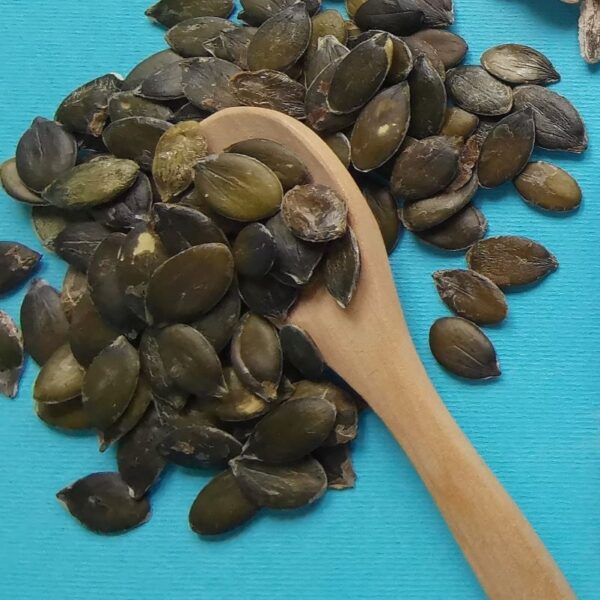Powdered cellulose is a finely ground form of cellulose, which is the primary structural component of the cell walls of plants. It occurs as a white or almost white, odorless, and tasteless powder of various particle sizes, ranging from a free-flowing fine or granular dense powder to a coarse, fluffy, non-flowing material.
Powdered cellulose is commonly used as a food additive. It is a thickener, stabilizer, and texturizer in a wide range of food products, such as ice cream, baked goods, and processed meats. Its excellent water-absorption properties make it an ideal replacement for fat. It also can replace other bulking aids with nutritional value. Additionally, powdered cellulose can help increase processed foods’ shelf life. It is often used in the pharmaceutical and nutraceutical industry as a binder in tablets, as well as a filler in capsules. Its ability to promote controlled release of active ingredients makes it a valuable component in nutraceutical formulations.
What is Powdered Cellulose?
Cellulose is a complex carbohydrate consisting of long chains of glucose molecules linked together by beta-1,4-glycosidic bonds. It is the main component of plant cell walls and a significant source of dietary fiber. The cellulose structure is a linear polymer of glucose molecules, with each glucose unit flipped 180 degrees relative to the previous one. This arrangement allows for hydrogen bonds to form between the hydroxyl (OH) groups of neighboring glucose molecules, creating a rigid and fibrous structure. The hydrogen bonds between cellulose molecules are very strong, giving cellulose high tensile strength and making it resistant to enzyme degradation.
Source: Wikipedia
How is Powdered Cellulose Produced?
The purification and mechanical disintegration of α‐cellulose obtain powdered cellulose. α‐cellulose is first extracted as a pulp from fibrous plant materials and is converted into a white, odorless substance consisting of fibrous particles. There are various methods for obtaining powdered cellulose of different grades. In all these methods, the cellulose chains are partially degraded, enzymatically or thermally, or by using chemical reagents. The amorphous portions of the cellulose are hydrolyzed and removed with these treatments.
The decomposition of cellulosic raw material may be achieved by the sulfate or soda-sulfate process and may include subsequent bleaching using calcium hypochlorite. A suspension containing at least 50% cellulose of fiber length less than 0.2 mm, preferably less than 0.1 mm, is obtained and converted to cellulose powder by dehydration, drying, and breaking up fiber aggregates.
Another method employs sulfuric acid for hydrolysis, followed by delignification with hydrogen peroxide and then chlorine dioxide. The process efficiently produced powdered cellulose from the unbleached deciduous sulfate cellulose.
Use of Powdered Cellulose in Food and Nutrition
Cellulose is a pure glucose polymer, making it an effective inert substance for replacing sugars and starches in food formulations. It is porous and has high water-holding capacity, which helps modify and stabilize the physical properties of food products when added. It also provides a heat-stable framework for maintaining the physical form and texture of baked goods, such as breads, buns, bagels, biscuits, cookies, muffins, and pizza crusts. Powdered cellulose is free of any peculiar taste and color. It is available in various particle sizes to retain the desired mouthfeel.
Applications in the Food Industry
| Function | Applications |
| Anticaking Agent | Powdered cellulose prevents particles from sticking together and forming lumps. It absorbs moisture and forms a protective coating around the particles, maintaining their individuality and preventing them from sticking together. |
| Bulking Agent | Powdered cellulose has a low bulk density with zero caloric value. It efficiently acts as a bulking agent in powder formulations without affecting the taste and color of food products. |
| Humectant | Powdered cellulose binds high amounts of water. The natural humectant improves product quality, regulates the moisture content, and extends shelf life. |
| Stabilizer | When added to food products, powdered cellulose absorbs moisture and thickens the mixture, helping to prevent separation and maintain a uniform texture. It can also improve the mouthfeel of a product by providing a smooth and creamy texture, particularly in items like ice cream and sauces. |
| Thickener | Powdered cellulose improves the viscosity of composition by binding to water. |
Applications in Nutrition and Nutraceuticals
Powdered cellulose has excellent compressibility and is used in solid dose formulations, such as tablets. Tablets can be formed that are hard but dissolve quickly. Chemically, powdered cellulose is an inert substance, is not degraded during digestion, and has no appreciable absorption. In large quantities, it provides bulk and acts as a fiber. Even when the same active ingredient is administered, since the difference in elution rate and elution time may cause a difference in the manifestation of the efficacy, it is necessary to control the elution rate and the elution time within a range suitable for each active ingredient.
| Fiber Source | Powdered cellulose is traditionally used as a fiber ingredient to increase the fiber content of formulated foods and reduce their caloric content. |
| Anticaking Agent | Powdered cellulose prevents particles from sticking together and forming lumps. It absorbs moisture and forms a protective coating around the particles. Dietary supplement powders use this anticaking agent to improve shelf stability. |
| Tableting Agent | Powdered cellulose has excellent compressibility properties and is used in solid dose forms, such as tablets. Tablets can be formed that are hard but dissolve quickly. |
| Filler | Owing to its inert nature, powdered cellulose is effectively used as a filler in capsules and tablets, as well as powdered supplements. |
| Disintegrant | Powdered cellulose has been widely used as a disintegrant in dry compressions and wet granulation methods for tablet manufacturing. It enhances drug dissolution by increasing the rate of tablet disintegration. |
Product Examples
| Type | Examples |
| Bakery | Cake, Cookies, Pastries |
| Convenience | Powder Premixes, Ready-to-Cook Products, Jams, Jellies, Sauces, Condiments |
| Others | Table Sweeteners, Beverage Mixes, Salt |
| Dairy | Yogurt, Cream, Milk-Based Beverages |
| Nutraceuticals | Tablets, Capsules |
| Dietary Supplements | Protein Powders, Powder Supplements |
Powdered Cellulose in Various Diets
- Diet for Weight Management: Powdered cellulose is exceptionally high in fiber content and has no caloric value. It is used as a fiber source and filler in food products for weight management.
- Diet for Celiac Patients: Powdered cellulose is gluten-free and can be effectively used as a stabilizer and thickener in products replacing wheat-based products.
- Vegan: Powdered cellulose is suitable for vegan diets.
Properties of Powdered Cellulose
| Physical Form | Powder |
| Color | Colorless to white |
| Odor | Odorless |
| Shelf Life | 1 Year |
| Storage Temperature & Conditions | Ambient conditions in airtight container |
| Bulk Density | 0.2-0.35 g/cc (Differs by variant) |
| Average Particle Size | 60-300 µm (Differs by variant) |
| pH | Near neutral |
| Soluble | >1.5% |
| Moisture Content | <6.5 % |
| Claims (*Product Specific) | Ambient conditions in an airtight container |
Typical Formulations
Cookie filling
Here is an example of a fat-free cookie filling formulation table with powdered cellulose, along with the % weight of ingredients:
| Ingredient | % Composition |
| Glycerin | 20 |
| Powdered sugar | 40 |
| Natural flavor | As required |
| Colorant | As required |
| Cellulose / CMC (85/15) with 0.5 -1 % Cladophora | Make up to 100 |
Source: Google Patents
Emulsified Cooked Sausages
Here is an example of a sausage formulation table with powdered cellulose, along with the % weight of ingredients:
| Ingredient | % Composition |
| Beef | 52.5 |
| Pork | 15 |
| Pork back fat | 10 |
| Cellulose Gel | 10 |
| Salt | 2.5 |
| Sodium nitrite | 0.015 |
| Monosodium glutamate | 0.3 |
| Sodium tripolyphosphate | 0.2 |
| Garlic | 0.1 |
| Black pepper | 0.1 |
| Sodium erythrobate | 0.05 |
| Ice | 9.235 |
Source: Wiley
Gluten-free Crackers
Here is an example of a crackers formulation table with powdered cellulose, along with the % weight of ingredients:
| Ingredient | % Composition |
| Water | 3.75 |
| Flour | 15 |
| Psyllium husk | 2.5 |
| Baking powder | 2 |
| Sugar | 1.25 |
| Butter | 15 |
| Oil | 5 |
| Salt | 0.5 |
| Powdered cellulose | 5 |
Source: RSC
Powdered Cellulose Formulation Considerations
| Physical Forms | Powder |
| Stability | Insoluble in water |
| Nutritional Profile | 0 Cal/g |
| Sensory Attributes | Neutral |
| Dosage | 0.5-20%, depending on the application |
| Interaction with Other Components | Neutral and does not react with any components in the food matrix |
| Source | Plant source: trunks, stems, leaves etc. |
Cellulose vs. Powdered Cellulose
To produce powdered cellulose, cellulose fibers are first extracted from plant material, such as wood or cotton. These fibers are then mechanically processed to break them down into smaller particles. The resulting powder consists of tiny cellulose particles with a high surface area and can easily disperse in liquids. The chemical structure of powdered cellulose remains unchanged mainly during the manufacturing process.
Powdered cellulose particles are rod-shaped, which, above certain concentrations, build a three-dimensional network in a water system through hydrogen bonding. Cellulosic thickeners work by polymer chain entanglement and hydrogen bonding with water molecules. This is why powdered cellulose is often used as a thickening agent and stabilizer in food products.
Beneficial Properties
| Water Absorption | Depending on its fiber length, cellulose can retain 3.5-10 times its weight in water. Temperature and pH exerted small effects on water retention capacity. |
| Compressibility | Powdered cellulose is chemically inert and is thus not metabolized by the human body. The human body does not digest it since it does not contain the enzyme required for the hydrolysis of cellulose. |
| Zero calorie | Powdered cellulose contributes no calories to the food, making it perhaps the most effective fiber for reducing the energy content of food. |
| Chemical inertness | Powdered cellulose is chemically inert and is thus not metabolized by the human body. The human body does not digest it since the human body does not contain the enzyme required for the hydrolysis of cellulose. |
Effect on Properties
| Viscosity | Powdered cellulose stabilizes by adding texture, consistency, and stability to food and other products. |
| Stability | Powdered cellulose works as a stabilizer by adding texture, consistency, and stability to food and other products. |
| Sensory Properties | Cellulose powder is neutral in taste and odor and chemically inert, and it doesn’t affect the color or sensory properties of the food. |
Safety and Regulatory Considerations
| FDA Information | Cellulose, powdered cellulose, and microcrystalline cellulose were affirmed by GRAS. However, they do not appear in the Code of Federal Regulations (CFR) as they are considered to belong in the ‘prior sanctioned category’ (used in food before January 1, 1958 (FDA 2018). JECFA stated that purified, mechanically disintegrated cellulose is prepared by processing α‐cellulose obtained as a pulp from fibrous plant materials. |
| EU Information | Powdered cellulose is a permitted food additive in the EU with food additive number E 460 (ii). According to the EU regulation, powdered cellulose is obtained by purification and mechanical disintegration of α‐cellulose. |
Safety & Toxicity of Powdered Cellulose
Powdered cellulose is not a hazardous substance or mixture according to Regulation (EC) No. 1272/2008. This substance is not classified as dangerous according to Directive 67/548/EEC. The product should not be labeled per EC directives or national laws.
Identification Numbers
| IUPAC Name | (6S)-2-(hydroxymethyl)-6-[(3S)-4,5,6-trihydroxy-2-(hydroxymethyl)oxan-3-yl]oxyoxane-3,4,5-triol |
| CAS Number | 9004-34-6 |
| EC Number | 232-674-9 |
| E Number (Food Additive) | E 460(ii) |
| INS No. (Food Additive) | INS 460 |
Acceptable Limits or Maximum Usage
The maximum usage level of Powdered Cellulose in the food industry per the GSFA is as follows:
| Food Category | Max Level |
| Fermented milk (plain), heat-treated after fermentation | GMP |
| Other sugars and syrups (e.g., xylose, maple syrup, sugar toppings) | GMP |
| Renneted milk (plain) | GMP |
| Pasteurized cream (plain) | GMP |
| Sterilized and UHT creams, whipping and whipped creams, and reduced fat creams (plain) | GMP |
| Dried whey and whey products, excluding whey cheeses | 10000 mg/kg |
| Fresh meat, poultry, and game, whole pieces or cuts | GMP |
| Fresh meat, poultry, and game, comminuted | GMP |
| Frozen fish, fish filets, and fish products, including mollusks, crustaceans, and echinoderms | GMP |
| Frozen battered fish, fish filets, and fish products, including mollusks, crustaceans, and echinoderms | GMP |
| Frozen minced and creamed fish products, including mollusks, crustaceans, and echinoderms | GMP |
| Smoked, dried, fermented, and/or salted fish and fish products, including mollusks, crustaceans, and echinoderms | GMP |
| Other sugars and syrups (e.g. xylose, maple syrup, sugar toppings) | GMP |
| Salt Substitutes | GMP |
| Coffee, coffee substitutes, tea, herbal infusions, and other hot cereal and grain beverages, excluding cocoa | GMP |
| Cooked fish and fish products | GMP |
| Fried fish and fish products, including mollusks, crustaceans, and echinoderms | GMP |
| Cooked mollusks, crustaceans, and echinoderms | GMP |
| Herbs and spices | GMP |
The JECFA has not specified the ADI for powdered cellulose.
Fun Facts About Powdered Cellulose
- In gluten-free baking, powdered cellulose can be added to recipes to mimic some of the properties of gluten, such as improving texture and moisture retention.
- Powdered cellulose is often used to coat cheese shreds and keep them from sticking together.
Additional Resources
- IFT.org – Formulating Reduced-Calorie Foods with Powdered Cellulose
- ScienceDirect – Article on Microcrystalline Cellulose
- IntechOpen – Chapter on Powdered Cellulose
- ScienceDirect – Article on Cellulose in Food Technology
- EFSA Journal – Microcrystalline Cellulose Evaluation
- EPO – Document on Microcrystalline Cellulose
- Markan Global – Arbocel Powdered Cellulose
- ScienceDirect – Article on Powdered Cellulose Application








